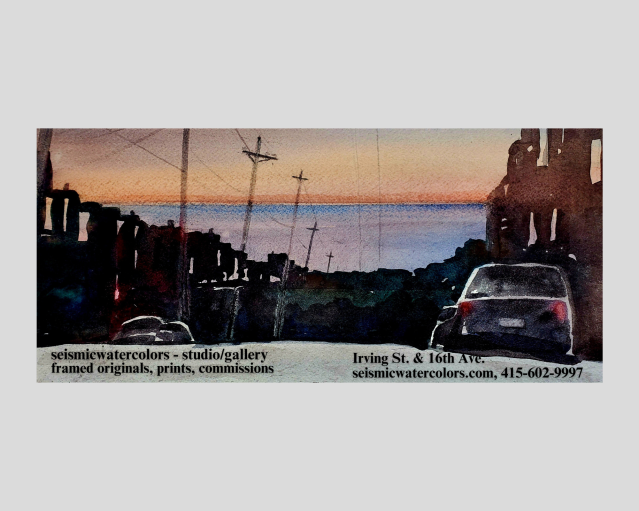By Noma Faingold
The majestic nature photography of San Francisco native Ansel Adams can be seen on postcards, wall calendars, prints and posters.
One of his most widely viewed shots shows Yosemite when it was virtually untouched by humans, where shadows and moonlight hit the face of Half Dome for maximum drama. By contrast, his 1932 panoramic landscape of the cloud-covered expanse, before the Golden Gate Bridge was built, has a surreal appearance.
His idealistic vision, precision, technical acumen and his perfectionism set a standard for black-and-white scenic art photography.

When Karen Haas, Lane Curator of Photographs at the Museum of Fine Arts in Boston, was tasked with creating a new Adams exhibition at San Francisco’s de Young Museum, she wanted to present the ubiquitous work of Adams (1902-1984) in a present-day context.
“I didn’t want to do a straight Ansel Adams show,” said Haas, who oversees a collection of 450 Adams photos at MFABoston. “I knew there were pressing issues that concerned him, that concern me, that concern all of us.”
The de Young exhibition, “Ansel Adams in Our Time,” which opened on April 8 and runs through July 23, places dozens of Adams photos, both iconic and lesser-known images, alongside works of 23 contemporary photographers/artists (such as Mark Ruwedel, Lucas Foglia, Mark C. Klett and Berkeley’s Richard Misrach), who focus on many of the same environmental “pressing issues,” including drought, forest fires, mining, urban sprawl, global warming, water rights, protected places and indigenous land.
“My goal in doing this show was to offer a new perspective on Ansel Adams by placing his work into broader context and bringing the conversation forward in time,” said Haas.
“Ansel Adams in Our Time,” organized in five thematic sections – Capturing the View, Marketing the View, San Francisco: Becoming a Modernist, Adams in the American Southwest, and Picturing the National Parks – provide thought-provoking contrasts between photos by Adams and artists influenced by his work.
For example, in the American Southwest section, seeing Adams’s 1933 photo, “Americana, Cigar Store Indian,” depicts a life-size, wood-carved statue of a stereotypical representation of an indigenous man next to a magazine rack (with visible Time and Life covers) hung near a double self-portrait by San Francisco-born Will Wilson (Diné/Navajo) called, “How the West Is One” (2014). The Wilson piece shows the artist in two profile shots facing each other. It’s a witty, in-your-face commentary on the cowboy-and-Indian depiction in westerns, such as the John Ford movie, “How the West Was Won.”
“There’s quite a juxtaposition with Will Wilson,” said Sarah Mackay, assistant curator at the Achenbach Foundation for Graphic Arts at the Fine Art Museums of San Francisco. “He has dedicated his photographic practice to giving back agency to his Native American subjects.”
Adams, a devoted conservationist, is most known for images showing the beauty of nature as unscathed by mankind. While, he wasn’t religious, being in a setting like Yosemite was a spiritual experience to Adams. He wanted to capture what he saw, how it made him feel and share it with others.
Photos like, “The Tetons and Snake River” (1942) from Grand Teton National Park in Wyoming, drew hordes of people to national parks. Ironically, Adams may have brought too much attention to these spaces, given the precarious position they are in today.
“These places are still glorious,” Haas said. “But we will never experience them alone.”

Adams, who grew up in the Sea Cliff neighborhood, was a poor student and dropped out of school. He was an exceptional musician and had plans to become a concert pianist. But once he fell in love with photography during one of his early trips to Yosemite as a teenager, he became obsessed with the camera.
His first museum exhibition was at the de Young in 1932 and he spent much of his life in San Francisco with his wife, Virginia (whom he met in Yosemite) and their two children. He was regarded as a modernist in his use of a large-format camera in the 1930s, which allowed him to capture longer distances and wider spaces. He also experimented with panchromatic film early in his seven-decade career, which provided sharper, more nuanced detail in his images.
In the later decades of his career, the Sierra Club activist shifted his focus to other settings, including several visits to Death Valley, which resulted in such masterful images as the almost abstract, “Sand Dunes, Sunrise, Death Valley National Monument” (1948).
He also became more drawn to gritty, urban subject matter.
“Freeway Interchange, Los Angeles” (1967), which was really just another kind of landscape Adams wanted people to see, as he saw it.
“He always thought the photograph he made that day was the best he could do,” Haas said. “Each one was better than the last.”
“Ansel Adams in Our Time” will be at the de Young Museum through July 23. A tintype photography workshop with Will Wilson (who has photos in the exhibit) is scheduled on July 15, 10 a.m.- 4 p.m. Participants will be guided through a full demonstration and get to create their own tintype to take home. Learn more at famsf.org.
Categories: photography












3 replies »